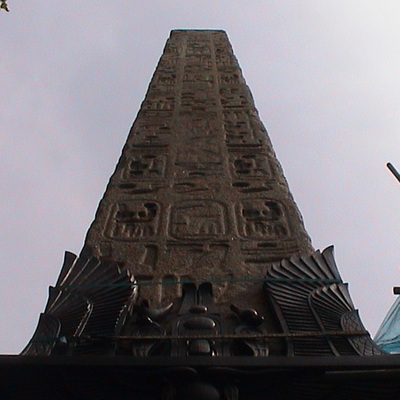Civil Engineer from Newcastle. Freemason. His brother, Waynman, was an engineer and an Egyptologist so was used on the project to bring Cleopatra's Needle to London. There is a legend that Waynman took three sacred objects from an Egyptian archaeological site where he worked and gave them to his brother John, who took them back to London and buried them under Cleopatra's Needle. It's an interesting story but one has to ask - why?
This section lists the memorials where the subject on this page is commemorated:
John Dixon
Commemorated ati
Cleopatra's needle
Pink granite, 68.5 feet high, 186 tons. Vulliamy created, and Youngs cast, th...
Other Subjects
Jan Verbruggen
Master gun-founder and artist. Born at Enkhuizen in the Netherlands. After an unsuccessful attempt in 1763, he and his son Pieter were appointed master founders at the Royal Arsenal Woolwich in 177...
John Scott Russell
One of the Secretaries to the Commissioners for the Great Exhibition 1851. Engineer and navel architect. Born at Parkhead, near Glasgow. Died at Ventnor, Isle of Wight
Sir Maurice Fitzmaurice
Civil engineer. Born at Clogher, near Tralee, County Kerry, Ireland. He worked on a wide range of projects around the world including the Forth Bridge, the Aswam Dam and the aborted Chignecto Ship ...
Frederick Handley Page
Aircraft designer and manufacturer. His company manufactured the Halifax bombers used in WW2.







Comments are provided by Facebook, please ensure you are signed in here to see them